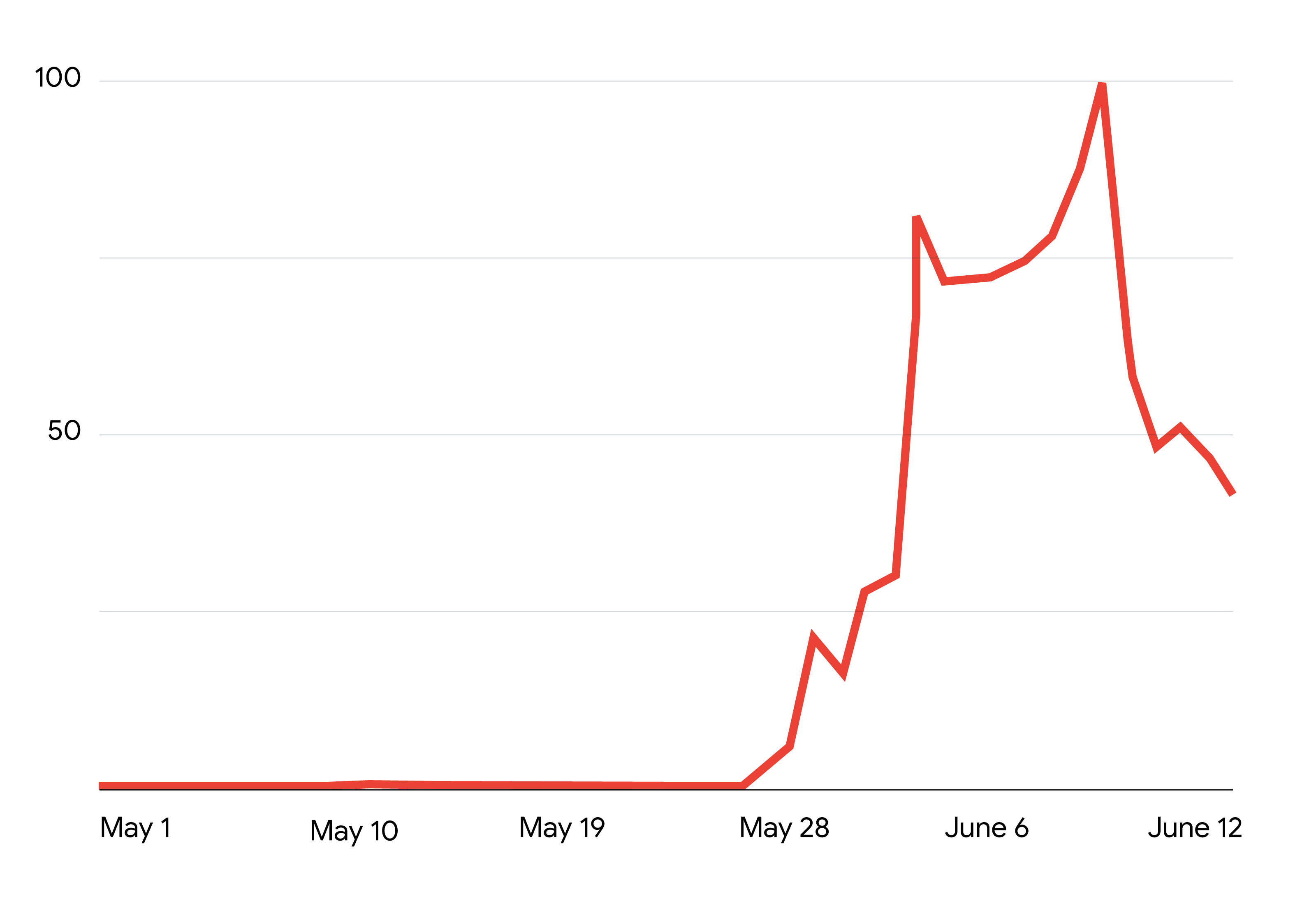Racial inequity has plagued the world for centuries. But recent acts of terror and violence against Black Americans have heightened our focus on systemic racism and galvanized a global outcry for justice.

As the Black Lives Matter movement gained momentum across cities and industries worldwide, it spread on YouTube too, with people speaking out and rallying their communities to come together for change. In the first 10 days of June alone, views of videos related to Black Lives Matter surged, generating 4X more views than occurred in all of 2019.1
Since then, we’ve continued to see growth in YouTube racial justice video content. People are using the platform to share stories, educate, and drive conversations around advocacy and meaningful action. Here are three specific ways we’re seeing people tune in and raise their voices in support of anti-racism.
Sharing personal experiences
For the Black community, tragedies like the killing of George Floyd are a persistent reminder of the harms caused by systemic racism. And, for years, Black creators have spoken about their own experiences with racism through “Being Black in” videos. This global video trend sheds light on the Black experience in different contexts, from countries like Korea, Germany, Hungary, Japan, the Netherlands, and the U.S. to industries like tech and the fine arts.
While the video trend isn’t new, recent events have given it a new tragic and timely relevance. On May 26, the day after George Floyd’s death, uploads of videos containing “Being Black in” in the title began to rise on YouTube. They peaked more than a week later on June 3.2
Beyond sharing their own personal experiences, Black creators are leading important conversations around top-of-mind issues, like talking to children about race and racism. Some have appeared on popular news outlets and others have offered advice based on their professional training as teachers and psychologists.
Many family creators have even posted videos putting these lessons into practice, by having tough discussions with their own kids on camera. While the majority of these videos come from Black and biracial families, some White creators have followed suit and encouraged others to do the same.
Showing solidarity
Another video trend we’ve seen emerge in recent weeks underscores that support for Black Lives Matter stretches beyond race, ethnicity, and nationality. Solidarity with the movement — through moments of silence, taking a knee, organized protests, and virtual fundraisers — has played out in video content uploaded around the world. Notably, during the three-week period following George Floyd’s death, viewership of Black Lives Matter videos went global.3
Black Lives Matter video viewership in the wake of George Floyd’s death

Views of videos with George Floyd’s name in the title or description also skyrocketed, peaking at over 200 million views.4 In recognition of Blackout Tuesday, a collective day of action on June 2, YouTube channels spanning news media, professional sports, entertainment companies, and cultural institutions shared videos running 8:46 in length, the amount of time George Floyd was pinned to the ground by police. Characterized by a black screen, these videos served as a symbol of protest against police brutality.
Committing to allyship, advocacy, and action
More than ever, people are demanding to see meaningful action against systemic racism across all facets of life: in law and policy, the workplace, and social culture. As viewers recognize their own accountability in the call for change, we’ve seen them gravitate toward videos about allyship from academics and creators. In the first week of June, for example, views of videos with “how to be an ally” or “dear white people” in the title increased 23% from viewership during all of May.5

Another way we’ve seen collective action play out on YouTube is through the support of Black-owned businesses. Creators have reignited a trend started by Alyssa Forever and Jackie Aina in 2016 — the early days of the Black Lives Matter movement — that put a spotlight on Black-owned cosmetic and clothing companies. Through full-face makeovers and hauls, creators like Nikkie Tutorials are now donating their video proceeds to organizations that support Black Lives Matter and encouraging followers to shop Black-owned businesses. Since May 25, there have been more than 2 million views of videos related to cosmetics with “Black owned” in the title, and many of the most-viewed videos belong to non-Black creators.6
It’s clear that the fight for racial justice relies on all of us — as people and as companies — to do our part to listen, learn, speak up, stand up, and take meaningful action. Though we may be physically distant, video connects us to each other and the world, and can bring us together to make positive change.








